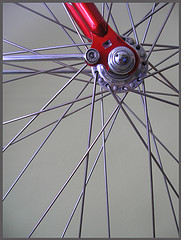When it comes to effective teaching, “less is more.” While the brain is an amazing information and multi-sensory processor, it can only effectively learn one new thing (concept) at a time. The maximum number of “bits of information” the mind can process at any given time is eight (like in the “eight bits” of a computer chip), or, as sometimes notated “7 +/- 2” (seven plus or minus two).* When it comes to teaching, we do well to focus on teaching one (1) new concept at each learning session (that’s one new concept per class session!).

How much information are you trying to pass on to your students in one sitting? How effective are you in focusing on the single most important thing you want your students to learn during a single class period?
To be more effective in your teaching, try these suggestions:
- Aim at teaching only one thing at a time
- Focus on teaching a central concept
- Spend time on rehearsal of the concept (define it; clarify what it is and what it isn’t)
- Test for comprehension
- Correct misunderstanding(s) of or about the concept
- Lead learners to apply the concept
The truth is that learning is a complex enterprise and we are not very efficient at it. Learning involves multifaceted and interrelated processes like attention, motivation, comprehension, concept attainment, rehearsal, reinforcement, acceptance, accommodation, and application. In order to teach effectively we need to facilitate the learning process for our students as much as possible. Two guidelines that will always serve us well in teaching are: (1) less is more, and ( 2) K.I.S.S.**

*See George Miller, “The Magical Number 7, Plus or Minus 2: Some Limits on Our Capacity for Processing Information,” Psychological Review 63:81-97 (1956). More current literature on learning that takes into account brain research supports this concept.
**”Keep It Simple, Stupid.”
